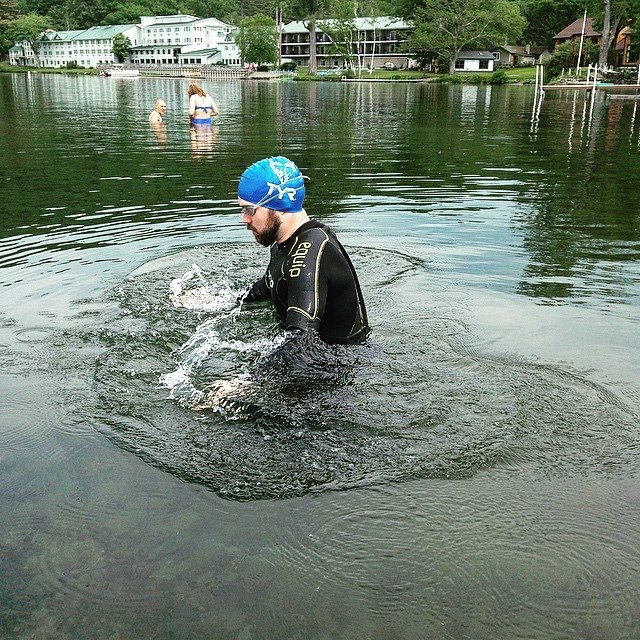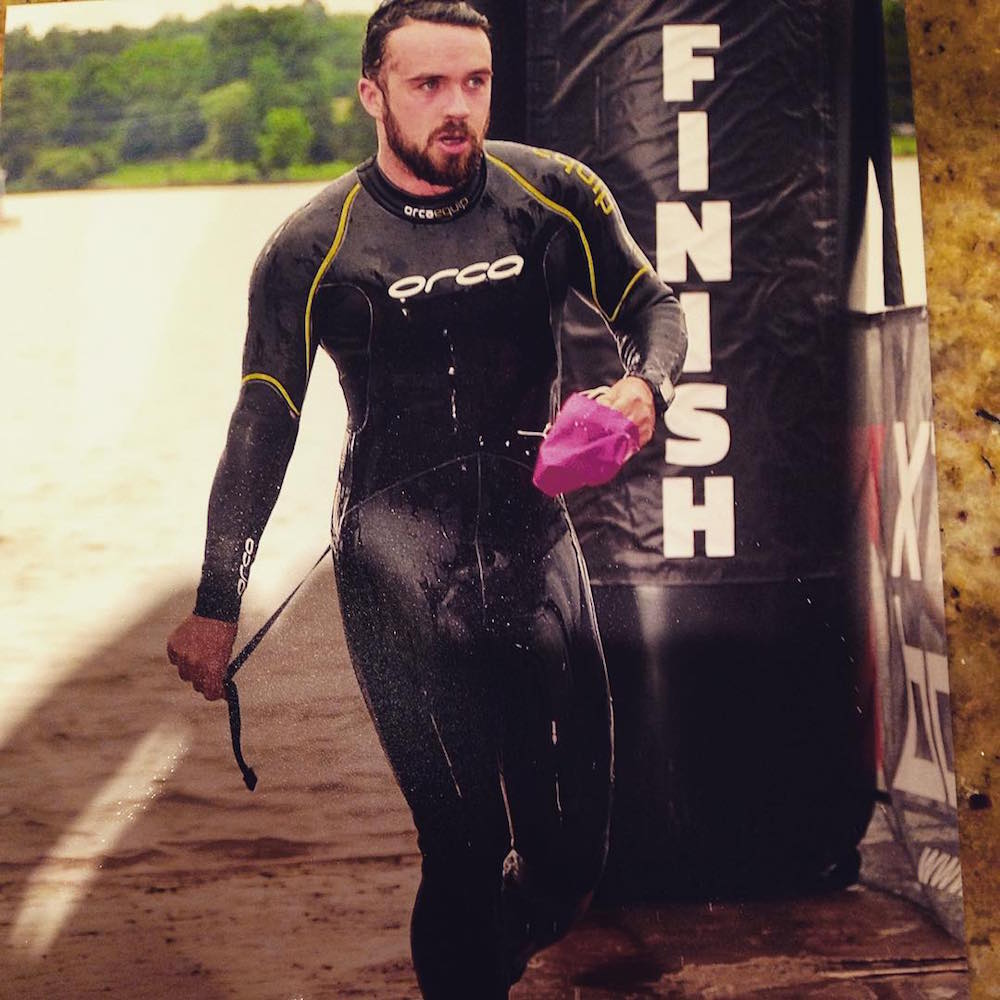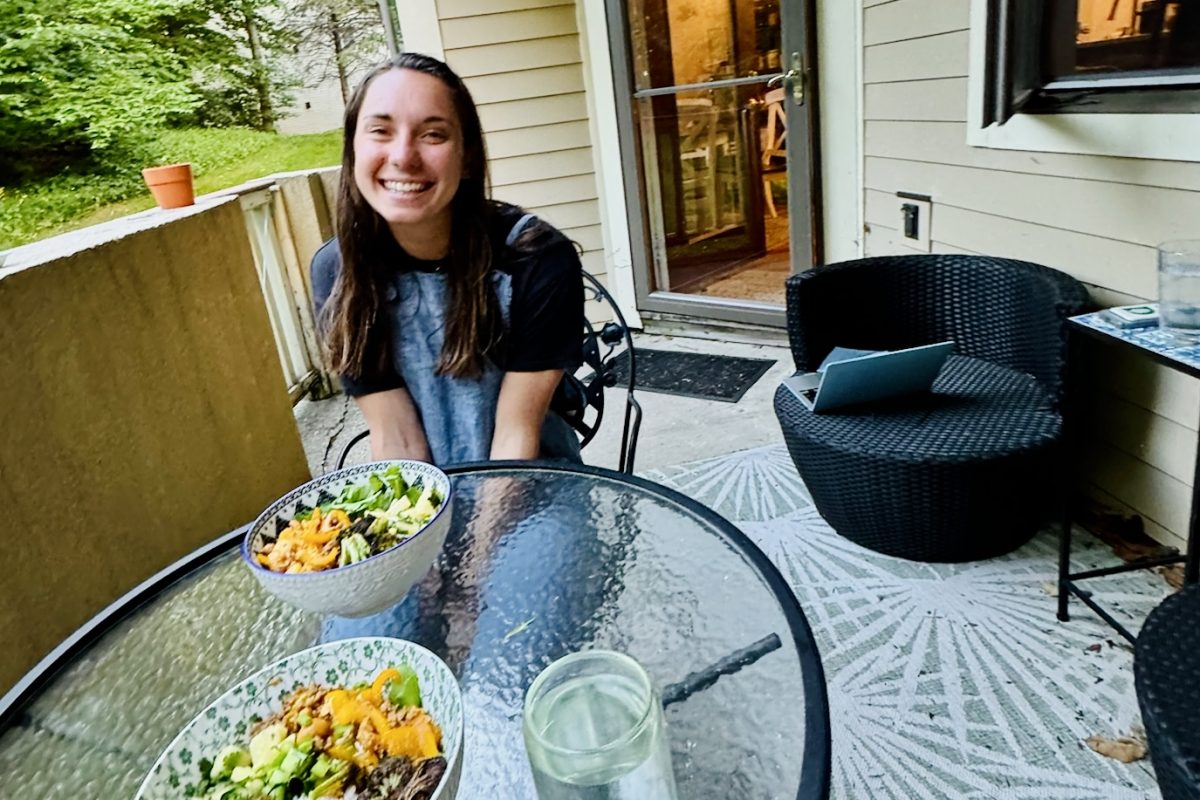
Living in New England, the adult version of Christmas is waiting for the first snowfall. For most skiers in New England usually by the time the first race comes around you have skied once or twice on snow if you are lucky. The key to be race ready without going on snow is to train your body in race conditions. We do this by rollerskiing, running, strength, etc. One workout that I do to make sure my endurance is up where I need it to be is swimming. Swimming being one of the best aerobic exercises you can do (after nordic skiing, of course) is one of the main reasons a lot of skier use that in the offseason.

Swimming is a great way to keep up your ski fitness while changing up your daily routine. As a nordic skier and triathlete, I like to mix up my workouts so that I can work on other muscles while still staying in shape for nordic in the winter. Being able to get to the pool and work on my endurance has made the transition to skiing quite easy.
This past week, I did two hard workouts to really test the endurance level and see what I need to work on. The key was to make sure that the two workouts were separated by a few days to ensure I was rested between the two tests.
Swimming Workout 1
Warmup: 800 yards:
- 300 choice
- 100 kick
- 6×50 strong (Level 3), each followed by 15 seconds rest
- 100 easy
Main Set: 950 yards (at Level 3-4):
- 50 freestyle (1-minute recovery)
- 100 freestyle (1:30-minute recovery)
- 800 freestyle (2-minute recovery, or as long as you need before the cool down)
Cool down: 250 yards
- 5×50 Free
Total Distance: 2000 yards
Swimming Workout 2
Warmup: 800 yards:
- 300 choice
- 100 kick
- 4×75 build (Level 2-3), with each pool length (25 yards) faster than the last
- 100 easy
Main Set: 600 yards:
- 200 freestyle as fast as you can (2-minute recovery)
- 400 freestyle as fast as you can (2-minute recovery or as much time as you need before the cool down)
Cool down: 350 yards:
- 100 Choice
- 5×50 easy
Total Distance: 1750 yards
During your warmup you should focus on your technique. This is the time to make sure that your technique doesn’t fall apart during the main set. The warmup is also the best time to get the junk out of your system and really gauge how your main workout will go.
When you get to the main set, this is where the fun begins. The effort should be between Level 3-4, but be at a pace that you can sustain for the whole workout. For example, you shouldn’t do the 200 freestyle as fast as you can, then by the time you get to the 400 you die halfway through it. The times for each interval will be dependent on how fast you swim. Just like in skiing, you want to be as consistent as possible with your perceived effort. Both Workout 1 and Workout 2 should be done at the same effort to get the most accurate times.
During the main set, one of the most important things is to make sure you take the appropriate rest between each set. During the rest, catch your breath, drink water and refuel your body before the next interval. Like in skiing, rest is just as important as the interval itself so ensuring you take the accurate rest is critical. The total time for each workout will vary depending on how long it takes you to warm up, race and cool down, but it usually will take about 40-60 minutes to complete from start to finish.

The cool down is the final part of the workout and should be done fully. This will help to ensure that your muscles relax and you won’t be sore or unable to move your arms the next day. The cool down should be slow and easy with the effort being Level 1 or less.
A little background about myself is that I am not only a nordic skier, but I am also an avid triathlete. I am currently training for Ironman Mont-Tremblant, and this is part of my own Ironman training plan. I have done triathlons for the last 12 years and have been a nordic skier for the last 16 years. I have found a great balance between both and have found that each helps me prepare for the other. I have a great coach, Kyle Burnell, who works for PBM Coaching and provides me with workouts to help reach my full potential. He gave me this workout in order to test my “Critical Swim Speed” so that when I am in the pool I will have paces to hit based on the perceived effort for each workout.
Ian Tovell
Growing up in New England, Ian found his love for cross country skiing and running at a young age. As a lifelong lover of the sport, he fostered his connection to skiing as a coach for a local high school in Maine and a board member for the New England Nordic Ski Association. He's also a regular at the Birkie. In his free time you can find him on the running trails, ski trails, or just enjoying the New England outdoors with his son, Bear.



